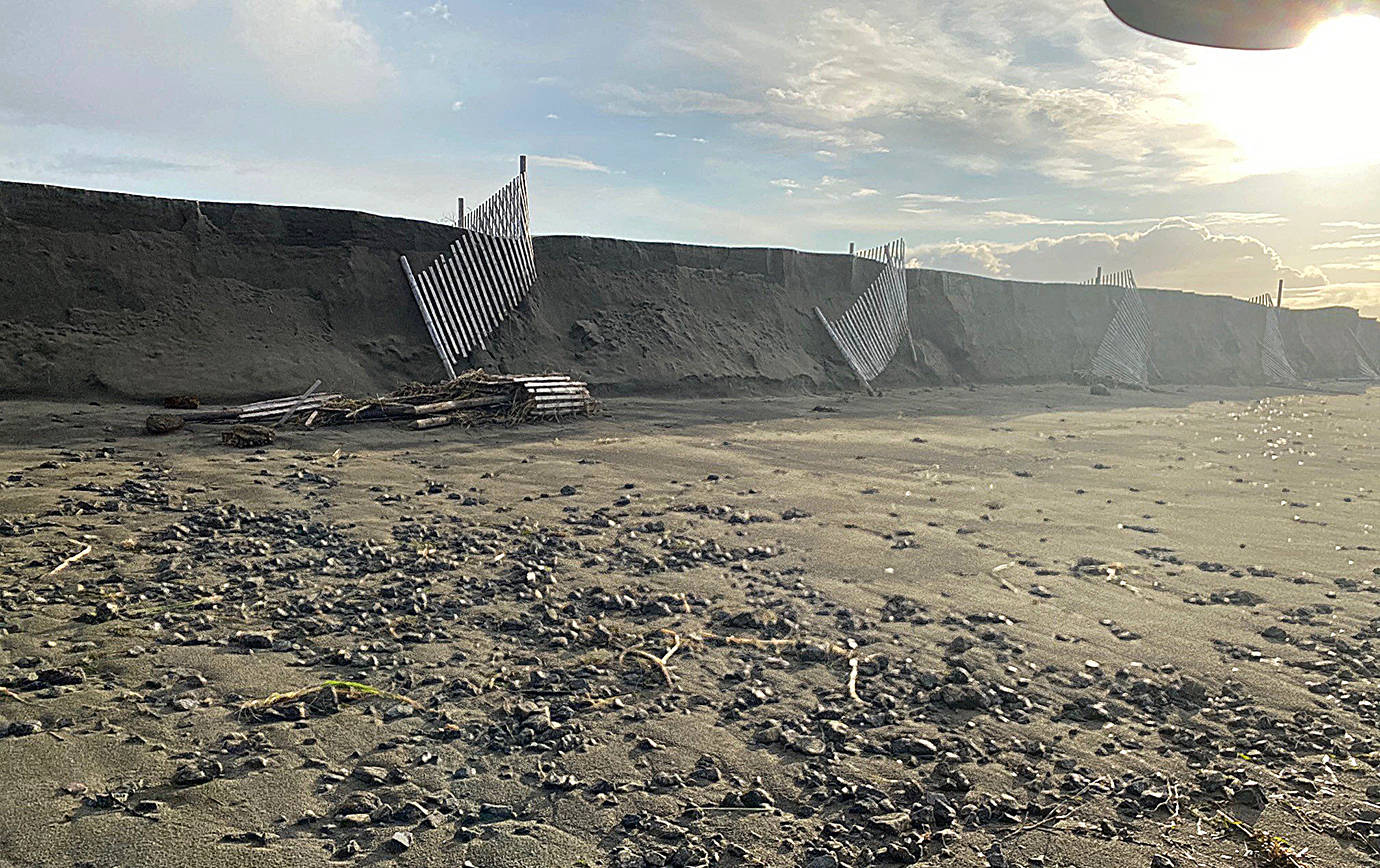The berm that protects the Shoalwater Bay Indian Reservation and surrounding Tokeland community from the sea took a beating during November’s storms and king tides, and the tribe is working with federal partners to repair it, with another stretch of king tides greater than 11 feet coming in less than two weeks.
The tribe saw the potential for damage to the berm and took action ahead of the storm’s arrival.
“The Shoalwater Bay Tribal Council with the help of our wonderful employees responded to the news of an incoming storm coinciding with a king tide,” said Charlene Nelson, Shoalwater Bay Tribal Chairwoman. “A State of Emergency Declaration was prepared on Nov. 12, which was then sent to the U.S. Army Corps of Engineers.”
The Corps had completed work to repair damage to the flood risk reduction berm caused by last winter’s storms in January, placing 10,000 tons of rock on the berm in less than a month.
The last storm, coinciding with tides topping 11 feet, hit the area late on Saturday, Nov. 14, and continued to pound the berm through Tuesday evening. The damage done to the berm in front of the village was threatening State Route 105 and beaches in the surrounding areas.
“The (Army Corps) came as soon as possible to survey the damage,” said Nelson.
“The berm sustained significant damage during the coastal storm,” said Army Corps spokesman Dallas Edwards. “Prior to the winter storm season, the Corps assisted the Shoalwater Tribe with developing a contingency plan to implement emergency protective measures to reduce flood risk to the community.”
Edwards continued, “The Army Corps flood team evaluated the condition of the berm after the recent storm and we are working with the tribe to update the contingency plan. We are also looking at options for conducting permanent repairs to the berm.”
The Graveyard Spit Barrier Dune, as the berm is called, incurred the most damage in the first 2,000 linear feet of the berm, according to the tribe. Wave action on Saturday began to slowly over-top the revetment protected section on the northwest end. Sunday’s wave energy and noon high tide created several small breaches. Tuesday’s wave action and run-up resulted in the erosion of the smaller areas into two larger areas.
Areas that had revetment materials placed by the Corps last winter were lost, approximately 1,400 linear feet of the remaining dredged spoils berm were over-topped by waves and lost within the first 2,000 feet. A few scattered barrier dune remnants remain from the 2018 restoration of the northwest end. Erosion fencing was lost in many areas. Revetment materials were scattered along the beach. The remainder of the berm is resilient and held fast; the southeast corner did incur some erosion at the toe but not as substantial, according to the tribe.
Tuesday, the tribe was continuing its correspondence with the Army Corps and other agencies regarding solutions and maintenance.
“The Shoalwater Bay Tribal Council is working with the (Corps) to find a way to protect the reservation, our tribal members, the people around us, Highway 105 and the beaches,” said Nelson.
“Construction efforts are difficult in this location as we are confined to water access, or crossing of the intertidal and subtidal mudflats,” read a statement from the tribe. “Several (Endangered Species Act) species also prevent wide scale construction efforts in the summer as adverse impacts are unavoidable. Winter months are difficult during weather and larger tides for limiting equipment transport and work availability time, dredging safely is also not viable in winter.”
Larissa Pfleeger, who serves as the Shoalwater Bay Tribe’s natural resources director, said: “Continued efforts to retain the barrier dune are needed, as the deterioration of the berm increases levels of coastal erosion and intervals of flooding to the Shoalwater Bay Reservation and surrounding areas. Immediate plans are not decided upon yet.”
Washaway Beach
The local effort to protect Washaway Beach in North Cove — just north of the reservation — did its job during the first big storm and king tide of the season, according to local Connie Allen.
“Most of the defenses are intact. We lost a large amount of sand on the beach in a few areas but it has returned more and more each day,” she said.
“A scarp opened up below ‘Metal Marcy’ (a piece of metal art in the shape of local photographer Marcy Merrill at the end of old State Route 105) and the pre tsunami layer in the big dune between Sea Mobile (Road at the end of old State Route 105) and Tamarack (Street to the north) is showing again. We plan to get these patched before the next king tides.”
The protection efforts involving dynamic revetment — the use of cobble and smaller stones designed to absorb the impact of waves on the shoreline, spearheaded by David Cottrell — has gained international attention and has reduced shoreline erosion in the area.


